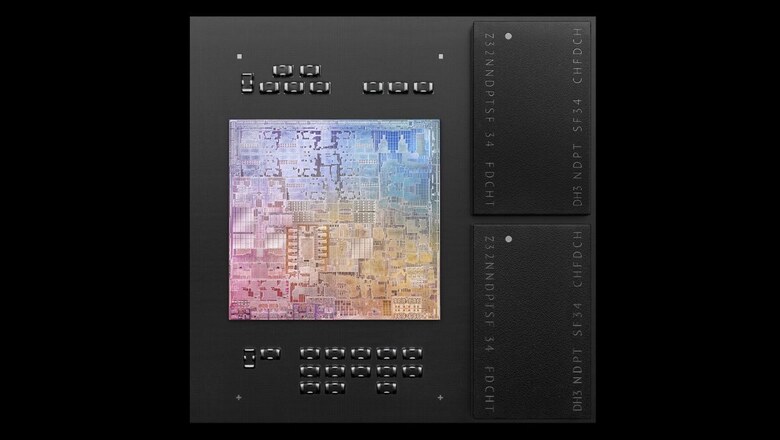
views
The wheels of change are in motion. Apple is giving the Mac computing device line its biggest change in years. And it is not just about new hardware or more powerful specs. In fact, this is a completely new direction for the MacBook and the Mac Mini. They may never need to look back. A path that they may never need to return from. This is very much the beginning of the end for the Apple and Intel partnership, where the former made Mac computing devices running the chips made by the latter. The iPhone, the iPad, the Apple TV, the Apple Watch, all run SoCs designed by Apple. The Macs now join that group. At this time, it is the new MacBook Air, the new MacBook Pro 13 and the new Mac Mini that get what is called the Apple M1 chip.
What exactly is the change? For the first time ever, the Mac will get a system on chip (SoC) instead of separate hardware for processor, graphics etc. That means the CPU, graphics neural engine and more are integrated in one chip. For all intents and purposes, the M1 chip draws on the architecture and the experience from the Apple A14 Bionic chips that power the Apple iPhone 12 series as well as the 2020 update for the Apple iPad Air. Yet, do not for one second think that all Macs will get the same M1 chip. There are variations, depending on the MacBook Air, MacBook Pro 13 and the Mac Mini. This will have high performance cores, high efficiency cores—8 or 7 cores, depending on which machine you are buying. The M1 chip is also built on the 5-nanometer process with 16 billion transistors.
Apple says that on the MacBook Pro 13, this is 2.8x faster than the current Intel chips and 3.5x faster in the new MacBook Air compared with the predecessor. In fact, both these machines are significantly faster than anything the Windows 10 laptop ecosystem has to offer. In fact, the MacBook Air is faster than 98 percent of PC laptops sold in the last year, according to Apple. It can deliver significantly higher performance for the CPU and graphics at much lower power consumption, compared with chips that power Windows laptops. If that is the sort of power and efficiency that can be drawn out of the ultra-slim and fan-less MacBook Air, one doesn’t really need to guess too hard to understand the sort of power the M1 chip holds.
The arrival of the M1 chip means that the change is very much underway. To be honest, I do not remember a time when Apple rolled out refreshes for the MacBook Air or the MacBook Pro 13, twice in the same year. Yet, this has happened this time. Add the Mac Mini to that, and we have three Macs that already have made the move from the Intel chips to the Apple Silicon. Think about it—do you really believe it will take 2 years to switch the entire line-up? Very unlikely! What remain for next year is the switch for the MacBook Pro 16, the iMac 21.5 and the iMac 27. And of course the Mac Pro and iMac Pro. If Apple can make the switch for three Mac lines in one go, I really wouldn’t be betting any money against all product lines also making the switch to Apple Silicon in 2021 itself.
There are little things that will make a difference. Instant wake for your Apple M1 chip powered Mac, much like your iPhone and iPad. Universal apps that lets developers create one app for all Mac computing devices, irrespective of Intel or M1 chip power. The ability to run the iPhone and iPad apps directly on the Macs, with macOS Big Sur. Better image processing for the FaceTime camera. Faster storage. Machine learning that is 15 times faster than before. And much longer battery life—up to 20 hours. For Mac users, the ability to run iPhone and iPad apps directly on the Mac would be priceless. And that immediately gives the macOS its single biggest leap in terms of app availability.
Read all the Latest News, Breaking News and Coronavirus News here


















Comments
0 comment